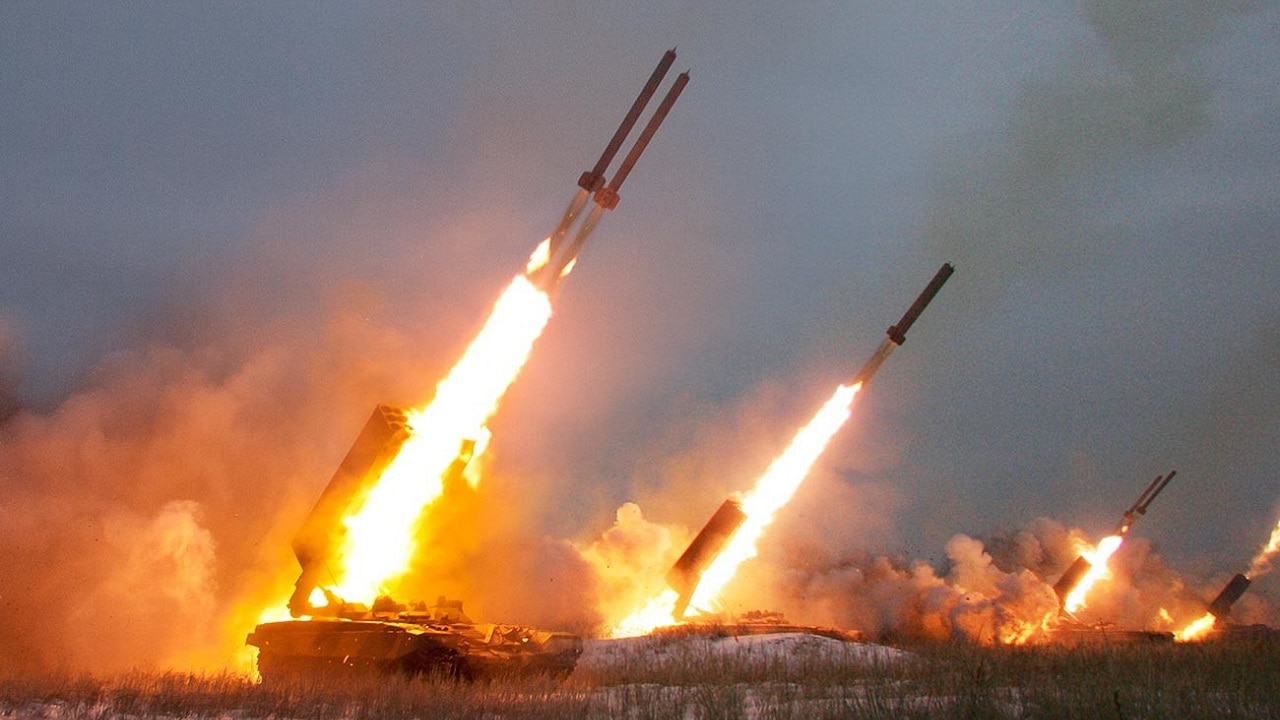Update on Russian Use of Cluster Bombs – Russian cluster bombs are terrorizing Ukrainian civilians in an endless barrage on cities that is only likely to get worse.
Russians are surrounding and besieging population centers with multiple-launch rocket systems that have clustering submunitions that explode in the air and rain down bomblets on innocent people.
Some of the bomblets do not explode and litter streets that endanger pedestrians who may step on them accidentally. Their use has promoted an international humanitarian outcry.
Human Rights Organizations Are Blaming Russia for the Carnage
The United Nations Human Rights office delivered a statement on March 11 that decried the Russians. Indiscriminate bombing by Vladimir Putin’s forces is amounting to charges of war crimes by the international community.
“Due to their wide area effects, the use of cluster munitions in populated areas is incompatible with the international humanitarian law principles governing the conduct of hostilities,” UN spokesperson Liz Throssell told journalists in Geneva.
NATO Secretary-General Jens Stoltenberg also suspects Russia is employing cluster bombs in civilian-inhabited areas.
What Are Cluster Bombs?
Cluster bombs are deadly and pernicious. They burst open above ground and deliver high-fragmentation submunitions. Scores of them can kill and maim those underneath the blast – a radius that can encompass several football fields. Russia has been using these munitions since the beginning of the war and 1945 has documented how they have killed adults and children. Unexploded bomblets can take years to clear and risk additional injuries as they lay in wait for unsuspecting people.
How Are They Delivered?
The most likely source of Russian cluster munitions are coming from multiple-launch rocket systems such as the Uragan, Smerch and Grad that have exploded in Kharkiv, Odessa, and Kherson, among other cities. It appears that Russian warplanes are dropping cluster munitions at lower rates. There have been reports of Putin’s air force delivering the RBK-500 cluster bomb loaded with PTAB-1M submunitions that are actually for destroying enemy tanks. So, cluster bombs meant for armored vehicles are being used against civilians. That gives you an idea of their destructive power.
There is a 2008 convention against the use of cluster bombs, but Russia and Ukraine (and the United States) are not signatories. Over 100 states are part of the convention.
Indiscriminate Use Against Non-Combatants Is the Problem
Cluster bomb use against military targets does not exactly break international law, but indiscriminate deployment against civilians without warning or without creating a humanitarian corridor for people to escape before their use could be considered a war crime.
Human Rights Watch is trying to interview witnesses and examine photos and videos. There is ample evidence of unexploded bomblets littering the ground in neighborhoods around the country. This would give the International Criminal Court assistance for their own separate investigation into Russian attacks on civilians that is ongoing as of March 11.
Cluster Bomb Use Likely to Continue
Bombing cities is the Russian way of war as they have exhibited willingness to destroy neighborhoods during their intervention in Syria. The Russians think they can use civilian bombing to break the will of the Ukrainian people and get President Volodymyr Zelenskyy to the negotiating table quicker.
Cluster bomb use by the Russians is not likely to cease. Invading forces are only limited by the number of rockets or air-dropped bombs that are in the Russian inventory. Putin will continue to deny their use. Now is the time for a cease-fire that will allow Ukrainian residents to leave the cities safely. Otherwise, they will have to hide in basements and subways to avoid the scourge of cluster bombs.
Now serving as 1945’s Defense and National Security Editor, Brent M. Eastwood, PhD, is the author of Humans, Machines, and Data: Future Trends in Warfare. He is an Emerging Threats expert and former U.S. Army Infantry officer. You can follow him on Twitter @BMEastwood.

